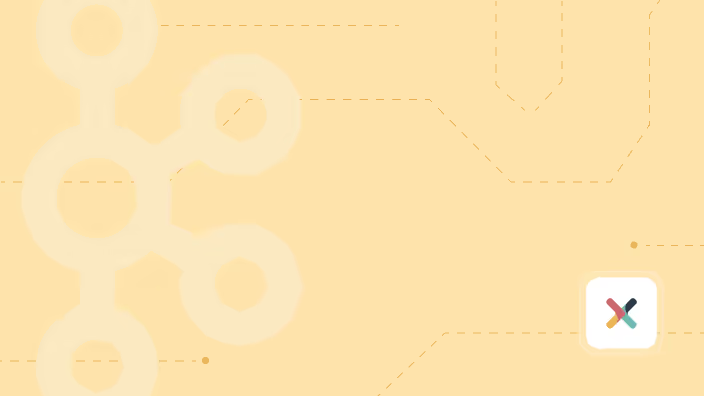How to overcome the steep learning curve of Apache Kafka
If you’re in the IT industry, you can’t help but catch the term ‘Apache Kafka’ uttered here and there. It’s an unmistakable sign that Apache Kafka is being adopted as the preferred data streaming platform by many organizations. The rising popularity of Kafka also creates a demand for developers proficient in the technology. It’s only […]

On this page
If you’re in the IT industry, you can’t help but catch the term ‘Apache Kafka’ uttered here and there. It’s an unmistakable sign that Apache Kafka is being adopted as the preferred data streaming platform by many organizations. The rising popularity of Kafka also creates a demand for developers proficient in the technology. It’s only natural that you’re curious about what Kafka is all about and how to make it part of your skillset.
WHY LEARN APACHE KAFKA?
You’ve heard about how Apache Kafka is the preferred solution to handling millions of messages in companies like Twitter and Uber. It is a reliable, fault-tolerant distributed event streaming platform that’s highly scalable. Kafka solves the problems of conventional batch-processing data infrastructures.
But what does it mean for developers? Well, it’s a skill that is highly sought after. Head over to forums like StackOverflow and Quora, and you’ll find a huge list of Kafka-related topics with high engagement.
Putting Kafka on top of your learning list can also result in a larger paycheck. According to ZipRecruiter, a Kafka Developer takes home an average of $129,073 per annum in the US. That’s quite a nice figure for the IT profession.
IS IT EASY?
Unfortunately, it’s not.
For those who are new to Kafka, it can be difficult to grasp the concept of Kafka brokers, clusters, partitions, topics, and logs. You’ll also need to pick up how producers and consumers store and retrieve messages on Kafka clusters.
Kafka producers and consumers work independently of each other. Data published by producers are retained over some time to ensure that they are always available for the consumers. This is different from conventional message brokers systems, where the messages are deleted once processed.
Many fine details of Apache Kafka may strike developers as totally new. Learning Kafka isn’t a walk in the park.
HOW TO OVERCOME THE STEEP LEARNING CURVE?
Developers often work on a tight schedule, and there’s little time to spare to pick up new technology. So, you need a game plan, and here it is.
1. CHECK OUT APACHE KAFKA DOCUMENTATIONS
Apache Kafka is an open-source platform, and you can find articles that explain the key concepts on its website. They can be a little bit wordy but gives you a good idea of the components that make up Kafka.
Alternatively, you can check out blog articles that introduce Kafka with easy-to-understand words.
2. SIGN UP FOR ONLINE COURSES
A few courses on Udemy are geared for beginners who are looking to pick up Kafka. The courses cover concepts, examples, and implementation of Kafka. These courses are highly rated amongst participants and are affordable.
3. ASK QUESTIONS ON FORUMS
It’s usual to bump into stumbling blocks as Apache Kafka is a challenging technology to master. A quick way to bounce questions off your head is to head over to StackExchange. Some of your peers were once in your position and ready to shed some light on your questions.
4. DOWNLOAD APACHE KAFKA AND TEST IT OUT
Theoretical knowledge can only take you so far for Apache Kafka. A true developer will get his/her hand dirty by testing out the platform. Download Apache Kafka (it’s free). Try setting up topics, store and retrieve messages with producers and consumers.
BOTTOM LINE
Even with the above suggestions, there isn’t a clear shortcut that could turn you into a Kafka expert overnight. It doesn’t help with Kafka’s lack of visual monitoring tool, which could help make sure you’re setting up everything correctly.
If time is not on your side, you’ll want to consider using Axual Platform, built around Kafka but minus the steep learning curve.
Answers to your questions about Axual’s All-in-one Kafka Platform
Are you curious about our All-in-one Kafka platform? Dive into our FAQs
for all the details you need, and find the answers to your burning questions.
Related blogs

Axual 2025.3 release introduces KSML 1.1 integration for automated stream processing deployment, group-based resource filtering for multi-team governance, and experimental MCP Server for AI-driven platform operations. Includes JSON schema support, Protobuf processing (beta), and enhanced audit tracking for enterprise Kafka implementations.

The Axual 2025.2 summer release delivers targeted improvements for enterprise-grade Kafka deployments. In this post, we walk through the latest updates—from enhanced audit tracking and OAuth support in the REST Proxy to smarter stream processing controls in KSML. These features are designed to solve the real-world governance, security, and operational challenges enterprises face when scaling Kafka across teams and systems.

Axual 2025.1 is here with exciting new features and updates. Whether you're strengthening security, improving observability, or bridging old legacy systems with modern event systems, like Kafka, Axual 2025.1 is built to keep you, your fellow developers, and engineers ahead of the game.
